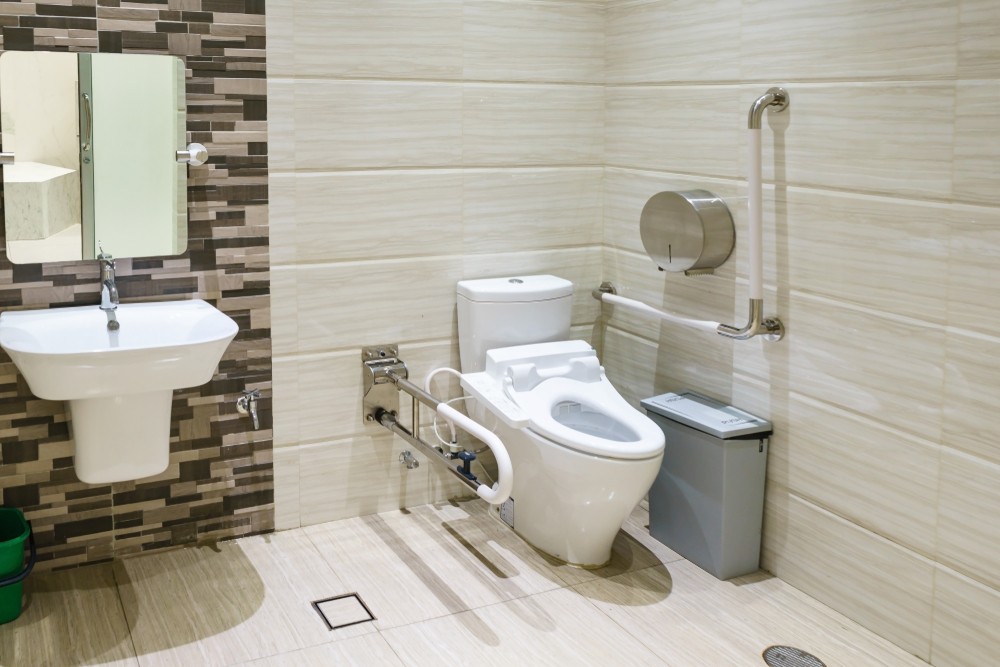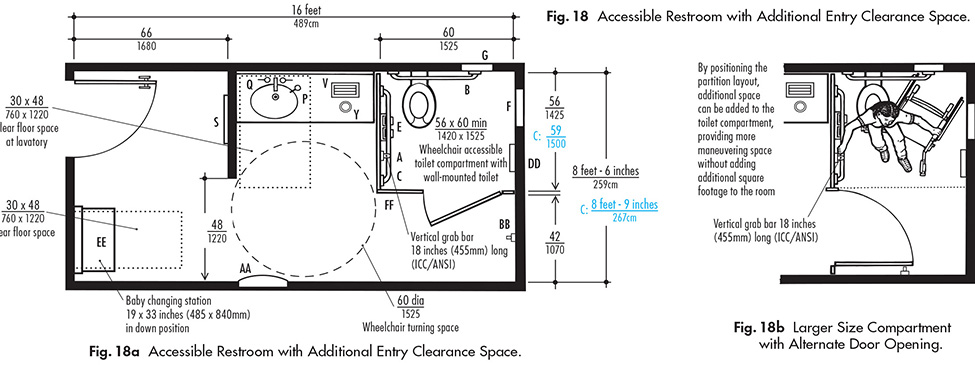Safety and Accessibility: Care Home Bathroom Requirements

The bathroom is a crucial space in any care home, but it becomes even more critical when considering the needs of residents with mobility limitations or cognitive impairments. Ensuring a safe and accessible bathroom environment is paramount for preventing accidents, promoting independence, and enhancing the overall well-being of residents.
Slip-Resistant Flooring, Grab Bars, and Non-Slip Surfaces
A significant concern in bathroom safety is the risk of falls. To mitigate this, the use of slip-resistant flooring materials is essential. These materials, often made of textured tiles or rubberized coatings, provide greater traction and reduce the likelihood of slipping, especially when the floor is wet. In addition to flooring, grab bars installed strategically around the toilet, shower, and bathtub provide vital support for residents who need assistance getting in and out of these areas. Grab bars should be securely mounted to the wall, and their placement should be carefully considered to accommodate various user heights and reach. Non-slip surfaces in the shower or bathtub are also crucial. These can be achieved through textured tiles, mats, or even textured shower floors. The use of non-slip surfaces ensures that residents have a secure footing, reducing the risk of falls and injuries.
Accessible Fixtures
To promote independence and dignity, care home bathrooms should be equipped with accessible fixtures that cater to residents with mobility limitations. Lowered sinks allow residents in wheelchairs or with limited reach to access the sink comfortably. Shower seats provide a stable and safe place to sit while showering, reducing the risk of falls and allowing residents to wash themselves independently. Hand-held showerheads offer greater flexibility and control, enabling residents to direct the water flow to suit their needs and preferences.
Bathroom Layouts
Carefully designed bathroom layouts can significantly enhance accessibility. A layout that prioritizes clear pathways and ample turning space allows residents in wheelchairs to maneuver easily. The placement of fixtures should also be considered to minimize the distance between them, reducing the need for residents to travel long distances within the bathroom. For example, placing the toilet, sink, and shower close together can create a more efficient and accessible layout. It is also important to ensure that the bathroom door is wide enough to accommodate wheelchairs and other assistive devices.
Hygiene and Sanitation

Maintaining a hygienic environment in a care home is paramount to the well-being of residents. Proper hygiene and sanitation practices are essential to prevent the spread of infections and ensure a healthy living environment.
Ventilation and Drainage
Adequate ventilation and drainage are crucial for preventing the growth of mold and mildew, which can pose health risks, particularly for individuals with compromised immune systems.
- Ventilation: Proper ventilation systems should be installed in bathrooms and other areas where moisture is prevalent. These systems should effectively remove moisture-laden air, preventing condensation and reducing the risk of mold growth.
- Drainage: All drains, including showers, sinks, and tubs, should be properly designed and maintained to ensure efficient water drainage. Blocked drains can lead to water stagnation, creating a breeding ground for bacteria and mold.
Antimicrobial Materials
Antimicrobial materials play a vital role in maintaining a hygienic environment by inhibiting the growth of bacteria and other microorganisms.
- Surfaces: Antimicrobial coatings can be applied to surfaces such as countertops, floors, and walls. These coatings release antimicrobial agents that kill or inhibit the growth of harmful bacteria.
- Fixtures: Antimicrobial materials can also be incorporated into bathroom fixtures such as faucets, handles, and toilet seats. This helps reduce the spread of germs through contact.
Cleaning and Disinfection Protocols, Care home bathroom requirements
Regular cleaning and disinfection protocols are essential for maintaining a hygienic environment.
- Frequency: Bathrooms should be cleaned and disinfected at least daily, with more frequent cleaning required in high-traffic areas.
- Cleaning Agents: Cleaning agents should be chosen based on their effectiveness against bacteria and viruses. Disinfectants should be used regularly to kill harmful microorganisms.
- Procedures: Cleaning procedures should be standardized and followed consistently. This includes thorough cleaning of all surfaces, fixtures, and equipment.
Comfort and Functionality

Creating a comfortable and functional bathroom environment is crucial in care homes. It significantly impacts residents’ well-being and caregivers’ efficiency.
Lighting and Temperature Control
Adequate lighting and temperature control are essential for promoting comfort and safety in care home bathrooms.
- Proper Lighting: Well-lit bathrooms reduce the risk of falls and accidents. Installing bright, even lighting, especially around mirrors and showers, improves visibility and eases daily tasks. This is especially important for residents with visual impairments.
- Temperature Control: Maintaining a comfortable temperature is crucial. Bathrooms should be equipped with adjustable thermostats and heating systems to accommodate individual preferences and prevent discomfort, particularly for residents with sensitivity to temperature fluctuations.
Spacious Layouts and Ergonomic Design
Spacious layouts and ergonomic design are critical for both residents and caregivers.
- Spacious Layouts: A spacious bathroom provides ample room for movement, reducing the risk of falls and collisions. It also allows caregivers to maneuver easily, providing better assistance and care.
- Ergonomic Design: Features like grab bars, non-slip flooring, and raised toilets promote safety and independence. Caregivers benefit from ergonomic designs as well, reducing strain and fatigue during daily care tasks.
Features that Enhance Comfort
Numerous bathroom features can enhance comfort for residents.
- Heated Floors: Heated floors create a warm and cozy environment, especially beneficial for residents who experience cold feet or have mobility limitations.
- Towel Warmers: Towel warmers add a touch of luxury and provide a warm, comforting experience after showering.
- Soft Lighting: Incorporating soft, ambient lighting, particularly at night, can create a relaxing atmosphere and promote restful sleep.
Care home bathroom requirements emphasize accessibility and safety, prioritizing features that promote independence and well-being. A bluestone digital glass bathroom scale with LCD display can be a valuable addition, offering a clear and easy-to-read display for monitoring residents’ weight, an essential factor in overall health management within the care home environment.
Care home bathrooms must prioritize safety and accessibility, featuring grab bars, non-slip flooring, and spacious layouts. To enhance natural light and create a more inviting atmosphere, consider incorporating glass blocks in the shower area. Learn how to install these stylish and functional elements by visiting how to install glass blocks in bathroom.
These modifications not only improve the bathroom’s aesthetic but also cater to the specific needs of residents, ensuring a comfortable and dignified living experience.